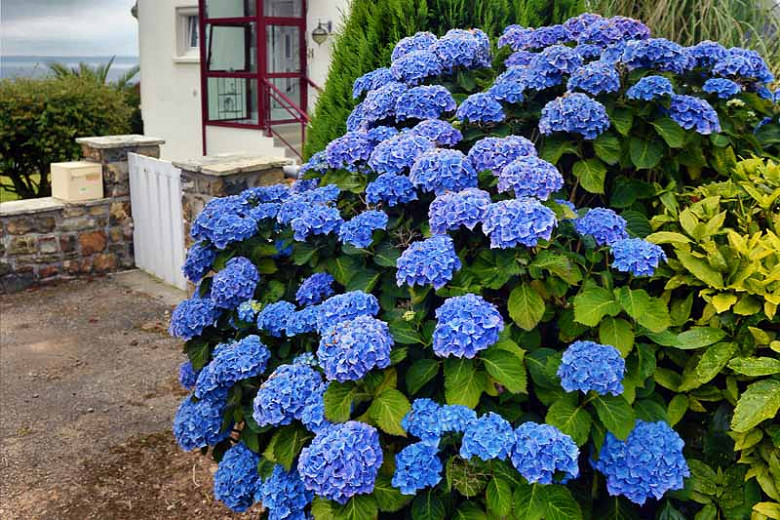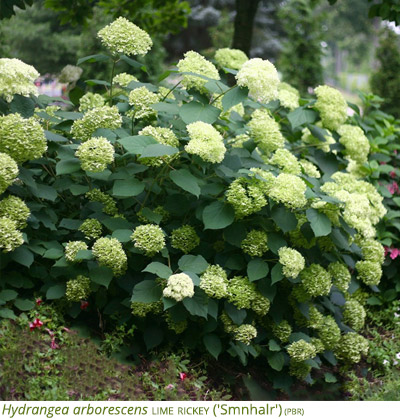How To Grow Hydrangea Macrophylla Like A Pro
Hydrangea macrophylla, also known as bigleaf hydrangea, is a popular flowering shrub that is known for its large, showy blooms. These hydrangeas can be grown in a variety of climates and conditions, but they do best in moist, well-drained soil that is rich in organic matter.
If you are looking to grow hydrangea macrophylla like a pro, here are a few tips:
- Choose the right location. Hydrangea macrophylla prefers full sun to partial shade. Too much sun can cause the leaves to scorch, while too much shade can prevent the flowers from blooming.
- Prepare the soil. Before planting, amend the soil with compost or other organic matter to improve drainage and fertility. Hydrangea macrophylla does not tolerate soggy soil, so it is important to make sure that the soil drains well.
- Plant at the right depth. When planting hydrangea macrophylla, do not bury the crown of the plant deeper than it was growing in the container. Planting too deeply can cause the plant to rot.
- Water regularly. Hydrangea macrophylla needs regular watering, especially during hot, dry weather. Water deeply so that the water reaches the roots.
- Fertilize in the spring. Apply a balanced fertilizer to hydrangea macrophylla in the spring. A fertilizer that is high in phosphorus will help to promote flowering.
- Prune in the spring. Prune hydrangea macrophylla in the spring after the flowers have faded. Remove any dead, diseased, or damaged branches. You can also prune to shape the plant.
- Protect from pests and diseases. Hydrangea macrophylla is susceptible to a few pests and diseases, such as hydrangea leaf spot and hydrangea aphids. If you notice any problems, treat them promptly.
With proper care, hydrangea macrophylla will thrive in your garden for years to come.
Here are some additional tips for growing hydrangea macrophylla like a pro:
- Mulch around the plant to help retain moisture and suppress weeds.
- Water with rainwater whenever possible, as this will help to keep the flowers blue.
- Add aluminum sulfate to the soil if you want to encourage blue flowers.
- Prune the plant in the fall to remove any spent blooms.
- Protect the plant from frost in the winter by wrapping it in burlap or covering it with a tarp.
With a little care and attention, you can grow beautiful hydrangea macrophylla plants that will add color and interest to your garden for years to come.
Hydrangea macrophylla, also known as bigleaf hydrangea, is a popular shrub that is known for its large, showy blooms. The flowers can be blue, pink, purple, or white, and they can change color depending on the soil pH. Hydrangea macrophylla is a relatively easy plant to care for, and it can thrive in a variety of climates.
If you are interested in learning more about hydrangea macrophylla, I recommend visiting the website . This website has a wealth of information about hydrangeas, including care tips, plant profiles, and a gallery of photos. You can also find a list of local nurseries that sell hydrangeas.
I hope this helps!
FAQ of hydrangea macrophylla
- What are the best growing conditions for Hydrangea macrophylla?
Hydrangea macrophylla is a deciduous shrub that prefers moist, well-drained soil and full sun to partial shade. It is important to avoid planting hydrangeas in areas where the soil is alkaline, as this can cause the flowers to turn green.
- What is the best time to plant Hydrangea macrophylla?
The best time to plant Hydrangea macrophylla is in the spring or fall, when the weather is mild. If you are planting in the spring, make sure to water the plant regularly until it is established.
- How do I care for Hydrangea macrophylla?
Hydrangea macrophylla is a relatively low-maintenance plant. It needs to be watered regularly, especially during hot, dry weather. You should also fertilize the plant once a year in the spring.
- Why are my Hydrangea macrophylla flowers turning green?
The color of Hydrangea macrophylla flowers is determined by the acidity of the soil. If the soil is alkaline, the flowers will turn green. You can lower the pH of the soil by adding sulfur or aluminum sulfate.
- How do I propagate Hydrangea macrophylla?
Hydrangea macrophylla can be propagated by dividing the roots, taking cuttings, or layering. Dividing the roots is the most successful method. To do this, dig up the plant in the spring or fall and divide it into two or three sections. Each section should have at least one healthy root system.
Image of hydrangea macrophylla
- A large, white hydrangea macrophylla in full bloom. The flowers are clustered together in large, round heads.

- A pink hydrangea macrophylla in full bloom. The flowers are a deep pink color and are arranged in cascading clusters.

- A blue hydrangea macrophylla in full bloom. The flowers are a light blue color and are arranged in large, spherical clusters.

- A lime green hydrangea macrophylla in full bloom. The flowers are a lime green color and are arranged in small, round clusters.

- A variegated hydrangea macrophylla in full bloom. The flowers are a mix of white, pink, and green colors.

Post a Comment for "How To Grow Hydrangea Macrophylla Like A Pro"